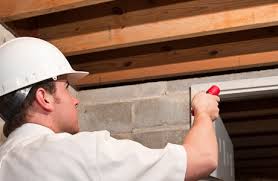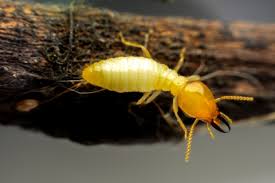The Basic Principles Of Termite Control Specialists
This webpage describes the three types of subterranean termite, drywood and dampwood, and also the termite species that are found in infestations around Australia.
Termites are classified depending on their nesting and feeding habits: dampwood, drywood and subterranean.
Subterranean termites are the most frequent type of termite that are among the most destructive pests worldwide and infests timber. Outdoors timber that is dead is mostly infested by them in contact with the soil, such as trees, stumps and branches. They prefer even though they can digest wood wood that has some amount of rust already, which makes it easier for them to digest it. .
The Best Strategy To Use For Termite Control Specialists
Subterranean termites need to be to survive, which makes their nests in or near where moisture can be easily acquired by them from the ground. They tunnel to get wood or soil and they tunnel into the soil to reach moisture. .
Dirt is used by the termites for a material to build nests and shelter tubes, which are composed of wood, soil, faeces and saliva. Some species construct carton nests above ground and build shield tubes (also called sand tubes) to connect the nest into the ground.
Foraging is determined by the weather, with activity in winter or conditions and action in summer . In tropical areas they can forage with peaks during wetter conditions.
The 10-Minute Rule for Termite Control Review
Termites reside inside parts of timber, wholly in small colonies, generally less than 1000 individuals. There may be several small colonies within a single piece of timber or object. They can feed across annual rings as is subterranean termites, so that the galleries don't adhere to the grain of wood, but they are inclined to steer clear of heartwood.

Colonies may grow for many years undetected until the wood breaks or the termites swarm. Before a knockout post the population reaches a vital point, the winged alates, which are might not be produced for decades in a brand new colony. They then leave the nest to pair up and find a site in order to mate and begin a new colony, usually not far from the parent colony. .
Dampwood termites normally infest decayed wood that remains moist due to contact with the soil or, as an example, via a water leak in a construction. They are most likely to infest timber that is outside, such as a tree, stump or logs in contact.

The Buzz on Termite Control Review
Termites live completely inside the timber that they create big galleries and feed . As with drywood termites, they can infest wood for years until they are discovered, which is most likely when the alates swarm from a colony that is mature. Swarming may occur with various species swarming look at this now at times, over a few months.
They're a sign of a moisture problem, if they're found at a building. By taking away the source of moisture they are generally minor pests and may be controlled in structures. In trees that are live they have a tendency to feed on wood.
Termite species can be tricky to recognize, even for the specialists. Identification is based on the soldiers, which is the termite caste which has the most distinguishable features.
Of the species it is the Coptotermes species which are public enemy number 1 in Australia.
An Unbiased View of Termite Control Services In Adelaide
The head of the soldier is yellowish and rectangular pear-shaped with darker mandibles that are thin. Body is up to 7 mm long. It is easily confused with two other indigenous Coptotermes species, C. frenchi and C. lacteus (Victoria Museum)
The soldiers generate a white sticky liquid from an opening (fontanelle) on front of head when protecting the nest from assault.
Coptotermes species do not construct mounds, but in other areas of Australia and Queensland. They stumps, nests in trees, sticks, buried wood spaces, around houses under buildings and in walls. Favoured trees click resources for nesting are various eucalypts English oaks and peppercorns. The colony is chiefly located in the root crown or the portion of their trunk.
Some Known Details About Termite Control Specialists
Although Mastotermes darwiniensis is the destructive locally across its range in tropical Australia, coptotermes acinaciformis have become the most destructive termite species in Australia overall. C. acinaciformis strikes all lumber structures and obligations forest and ornamental trees in addition to fruit trees.